 2015 Kia Cee'd II (facelift 2015) Dimensions, Size & Specs
2015 Kia Cee'd II (facelift 2015) Dimensions, Size & SpecsMeasurements of the 2015 Kia Cee'd II, engineered for optimal performance and comfort
| Dimensions | |
|---|---|
| Length: | 4310 mm169.7 in14.1 ft |
| Width: | 1780 mm70.1 in5.8 ft |
| Width (Opened Mirrors): | 2035 mm80.1 in6.7 ft |
| Height: | 1470 mm57.9 in4.8 ft |
| Trunk Capacity: | 380 liter13.4 cu ft |
| Trunk Capacity (Max): | 1318 liter46.5 cu ft |
| Weight Specifications | |
| Curb Weight: | 1179-1322 kg2599-2915 lbs |
| Maximal permitted Weight: | 1820-1940 kg4012-4277 lbs |
| Roof Load: | 80 kg176 lbs |
| Tire Specifications | |
| Rims Sizes: | 6-inch rims:
|
| Tire Sizes: |
|
The Kia Cee'd II facelift (2015-2018) is a compact hatchback offering practicality combined with modern styling and efficient use of space. Measuring 4310 mm (169.7 inches) in length, 1780 mm (70.1 inches) in width, and 1470 mm (57.9 inches) in height, this model balances agility with interior comfort ideally suited for urban and suburban driving. When the side mirrors are opened, the width extends to 2035 mm (80.1 inches), offering a broad stance for stability and road presence.
Curb weight ranges from 1179 to 1322 kg (2600 to 2915 lbs), depending on trim and configuration, with a maximum permissible weight between 1820 and 1940 kg (4012 to 4277 lbs). This makes the Cee'd II facelift relatively lightweight, contributing to fuel efficiency and easy maneuverability. The car supports a roof load capacity of 80 kg (176 lbs), which allows for additional cargo options such as roof boxes or racks.
Luggage capacity is a strong suit of the Kia Cee'd II facelift, offering 380 liters (13.4 cubic feet) of boot space with rear seats in place. Folding down the rear seats expands this capacity significantly to 1318 liters (46.5 cubic feet), making it suitable for larger loads or bulky items. The vehicle rides on various rim sizes including 15-, 16-, and 17-inch alloys that complement tire options ranging from 195/65 R15 91H up to 225/45 R17 91V, balancing ride comfort and responsive handling.
Overall, the Kia Cee'd II facelift presents itself as a versatile hatchback option within the compact car segment, ideal for drivers seeking a blend of size, comfort, and practical cargo solutions without compromising on style and road performance.
Discover the standout features that make the 2015 Kia Cee'd II a leader in its class
Have a question? Please check our knowledgebase first.
The Kia Cee'd II (facelift 2015) measures 4310 mm (169.7 inches) in length, 1780 mm (70.1 inches) in width without mirrors, and 1470 mm (57.9 inches) in height. When the side mirrors are opened, the width increases to 2035 mm (80.1 inches). These dimensions provide a balanced compact hatchback size, ideal for urban and suburban driving while offering sufficient cabin space.
The curb weight of the Kia Cee'd II (facelift 2015) ranges from 1179 kg to 1322 kg (2600 to 2915 pounds), depending on the configuration and trim. The maximum weight, which includes the vehicle, passengers, cargo, and fluids, ranges between 1820 kg and 1940 kg (4004 to 4277 pounds). These weight figures reflect the car's build quality and various equipment levels offered during production.
The Kia Cee'd II has a luggage compartment volume of 380 liters (approximately 13.4 cubic feet) with the rear seats in their upright position. When the rear seats are folded down, the luggage capacity expands significantly to 1318 liters (around 46.5 cubic feet). This flexibility makes the car very practical for carrying larger items or more cargo during trips, enhancing its utility as a compact hatchback.
Yes, the Kia Cee'd II (facelift 2015) comfortably fits into a standard home garage. Standard garages typically have a width of about 2.4 to 2.7 meters (7.9 to 8.9 feet) and a length of about 5 to 6 meters (16.4 to 19.7 feet). With a width of 1.78 meters (70.1 inches) excluding mirrors and 2.035 meters (80.1 inches) with mirrors open, and a length of 4.31 meters (169.7 inches), the Cee'd has adequate clearance for parking and door opening without difficulty.
With mirrors open, the Kia Cee'd II measures 2035 mm (80.1 inches) in width, which is quite standard for compact hatchbacks in its class. The additional width accounted for by the mirrors is essential for safe lane positioning and parking awareness. Most competitors in the segment feature similar mirror extension widths, ensuring the Cee'd II aligns well in terms of space usability and external profile for everyday driving.
The Kia Cee'd II (facelift 2015) comes with several rim options including 6.0J x 15 ET46, 5J x 16 ET50, and 7.0J x 17 ET53, each offering different aesthetics and handling characteristics. Tire sizes paired with these rims include 195/65 R15 91H, 205/55 R16 91H, and 225/45 R17 91V, providing a good balance between ride comfort, grip, and performance depending on the chosen setup.
Compared to its predecessor, the first generation Kia Cee'd, the Cee'd II (facelift 2015) is slightly larger in length and width, providing more interior space and a roomier cargo area. The facelift mainly refined styling and interior amenities but maintained similar overall dimensions with subtle increases to enhance passenger comfort and practicality. This evolution reflects Kia's focus on improving both design and functionality between generations.
The Kia Cee'd II (facelift 2015) competes well size-wise with other compact hatchbacks like the Volkswagen Golf, Ford Focus, and Hyundai i30. Its length of 4310 mm (169.7 inches) and width of 1780 mm (70.1 inches) align it closely with competitors, while its spacious luggage capacity of 380 liters (13.4 cubic feet) and expanded 1318 liters (46.5 cubic feet) with seats folded places it among the more practical options. This combination of dimensions and cargo space makes it a competitive choice for buyers seeking versatility and comfort.
The Kia Cee'd II (facelift 2015) has a maximum roof load capacity of 80 kg (176 pounds). This limit includes any roof racks or carriers used for items like bicycles, luggage boxes, or sports equipment. Staying within this roof load is crucial to ensure vehicle stability, safety, and proper handling, especially at higher speeds or on uneven terrain.
Discover similar sized cars.

| Production: | 2021-present |
|---|---|
| Model Year: | 2022 |
| Length: | 4315-4325 mm169.9-170.3 in |
| Width: | 2055 mm80.9 in |
| Height: | 1447 mm57.0 in |
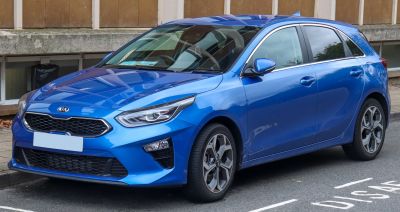
| Production: | 2018-2021 |
|---|---|
| Model Year: | 2018 |
| Length: | 4310-4325 mm169.7-170.3 in |
| Width: | 2055 mm80.9 in |
| Height: | 1447 mm57.0 in |
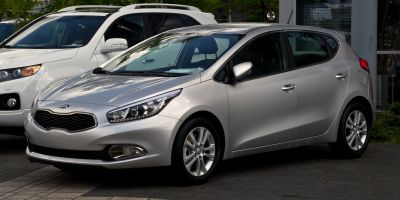
| Production: | 2012-2015 |
|---|---|
| Model Year: | 2012 |
| Length: | 4310 mm169.7 in |
| Width: | 2045 mm80.5 in |
| Height: | 1430-1470 mm56.3-57.9 in |

| Production: | 2013-2015 |
|---|---|
| Model Year: | 2013 |
| Length: | 4310 mm169.7 in |
| Width: | 1780 mm70.1 in |
| Height: | 1430 mm56.3 in |
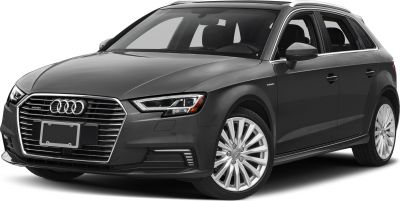
| Production: | 2016-2020 |
|---|---|
| Model Year: | 2017 |
| Length: | 4313 mm169.8 in |
| Width: | 1966 mm77.4 in |
| Height: | 1426-1461 mm56.1-57.5 in |
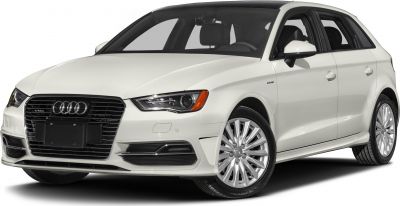
| Production: | 2013-2016 |
|---|---|
| Model Year: | 2013 |
| Length: | 4312 mm169.8 in |
| Width: | 1966 mm77.4 in |
| Height: | 1427 mm56.2 in |
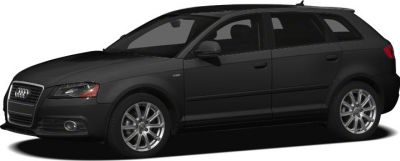
| Production: | 2009-2012 |
|---|---|
| Model Year: | 2008 |
| Length: | 4238 mm166.9 in |
| Width: | 1995-2025 mm78.5-79.7 in |
| Height: | 1421 mm55.9 in |
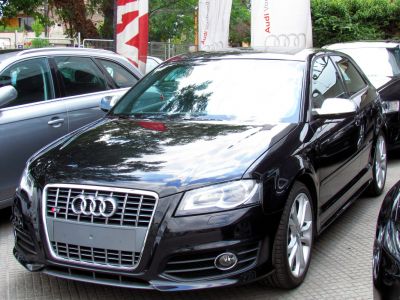
| Production: | 2008-2012 |
|---|---|
| Model Year: | 2008 |
| Length: | 4230 mm166.5 in |
| Width: | 1765 mm69.5 in |
| Height: | 1399 mm55.1 in |
